#Haruko Kato
Explore tagged Tumblr posts
Text
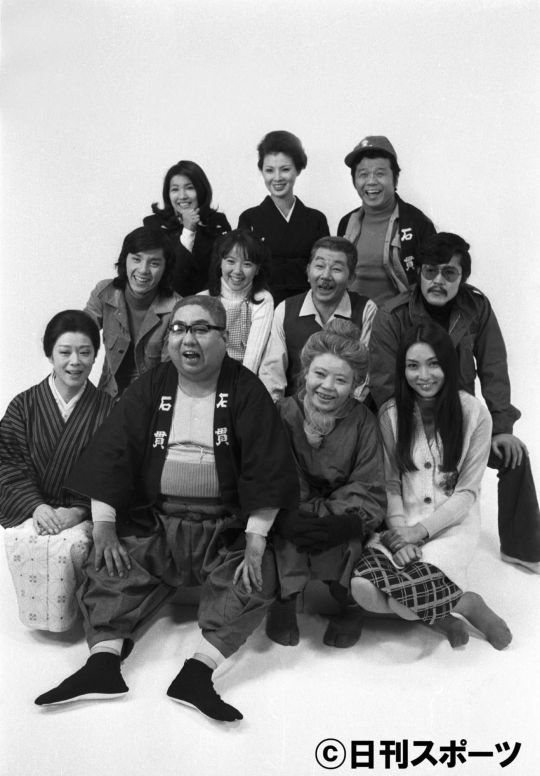
Cast photo for Kantaro Terauchi Family (寺内貫太郎一家), 1974. The 39 episode drama starred, from top left to bottom right:
Momoko Ikeda (いけだももこ) Hiroko Shino (篠ヒロコ) Tonpei Hidari (左とん平) Hideki Saijo (西城秀樹) Miyoko Asada (浅田美代子) Toru Yuri (由利徹) Tatsuya Fuji (藤竜也) Haruko Kato (加藤治子) Asei Kobayashi (小林亜星) Chiho Yuki (悠木千帆) Meiko Kaji (梶芽衣子)
#Meiko Kaji#梶芽衣子#Asei Kobayashi#小林亜星#Haruko Kato#加藤治子#Chiho Yuki#悠木千帆#Hideki Saijo#西城秀樹#Miyoko Asada#浅田美代子#Tatsuya Fuji#左とん平#Tonpei Hidari#Toru Yuri#由利徹#Momoko Ikeda#いけだももこ#press photo#kantaro terauchi family#寺内貫太郎一家#藤竜也
32 notes
·
View notes
Photo
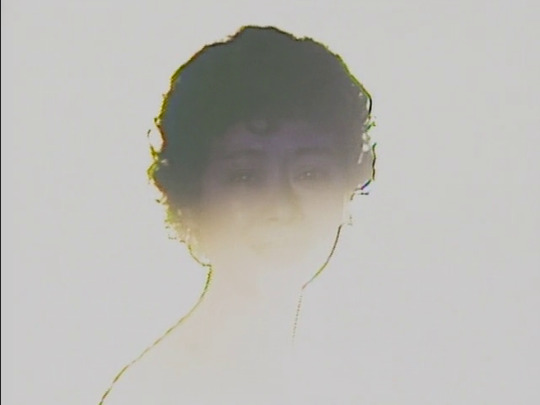

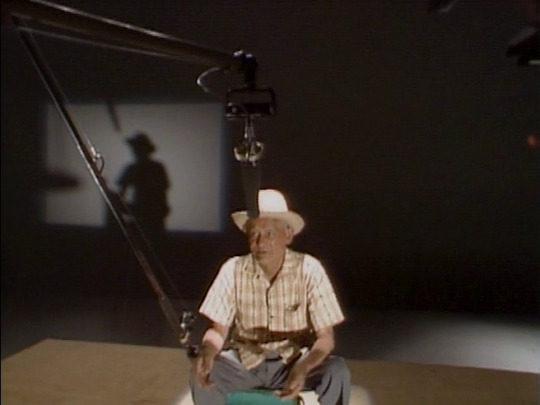
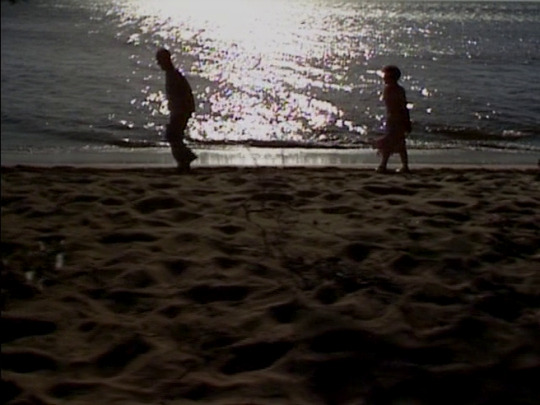



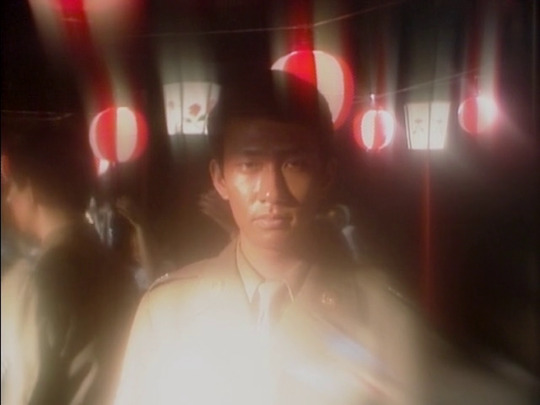

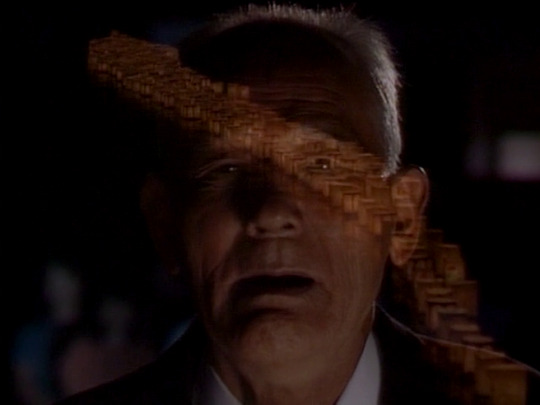
Akio Jissoji
- Nami no bon AKA Lanterns on Blue Waters
1983
#akio jissoji#lanterns on blue waters#波の盆#実相寺昭雄#nami no bon#笠智衆#chishu ryu#japanese film#加藤治子#haruko kato#tv drama#1983#akio jissôji
145 notes
·
View notes
Photo

ハウルの動く城 2004
There you are, sweetheart, sorry I'm late. I was looking everywhere for you.
#howls moving castle#2004#favoured#emily mortimer#jean simmons#christian bale#chieko baisho#takuya kimura#lauren bacall#akihiro miwa#billy crystal#tatsuya gashuin#josh hutcherson#ryunosuke kamiki#blythe danner#haruko kato#jena malone#yayoi kazuki
10 notes
·
View notes
Text
Howl's Moving Castle (2004)
Howl's Moving Castle (2004)
Synopsis- Sophie, a young woman cursed by a witch to live in an elderly body, embarks on a magical adventure with the enigmatic wizard Howl and his living castle to break her curse and rediscover her courage. Director- Hayao Miyazaki Cast- Chieko Baisho, Takuya Kimura, Akihiro Miwa, Tatsuya Gashuin, Haruko Kato, Emily Mortimer, Jean Simmons, Christian Bale, Lauren Bacall, Billy Crystal, Blythe…
#2000s Cinema#Adventure#Akihiro Miwa#Animation#★★★★#★★★★★#Billy Crystal#Blythe Danner#Chieko Baisho#Christian Bale#cinema#Emily Mortimer#Fantasy#film review#Film Reviews#Haruko Kato#Hayao Miyazaki#Japanese Cinema#Jean Simmons#Lauren Bacall#movie review#Takuya Kimura#Tatsuya Gashuin#World Cinema
0 notes
Text

Kinuyo Tanaka and Isuzu Yamada in Flowing (Mikio Naruse, 1956)
Cast: Kinuyo Tanaka, Isuzu Yamada, Hideko Takamine, Mariko Okada, Haruko Sugimura, Sumiko Kurishima, Chieko Nakakita, Natsuko Kahara, Seiji Miyaguchi, Daisuke Kato. Screenplay: Toshiro Ide, Aya Koda, Sumie Tanaka, based on a novel by Koda. Cinematography: Masao Tamai. Production design: Satoru Chuko. Film editing: Eiji Ooi. Music: Ichiro Saito.
Having been a college English teacher and a print journalist, I know something about what it's like to be in a dying profession. So I have some empathy with the women in the geisha house in Mikio Naruse's Flowing. Their story is told largely from the point of view of Rita Yamanaka (Kinuyo Tanaka), whose name the owner of the house, Otsuta (Isuzu Yamada), finds too difficult to pronounce, so she calls her Oharu, a name that will have resonance for anyone who has seen Kenji Mizoguchi's 1952 masterpiece, The Life of Oharu. But unlike Mizoguchi's heroine, this Oharu is a simple woman in a profession that will probably never vanish: a maid. Her quiet ubiquity in the house enables her to see and hear things that heighten her mistress's financial struggles and the household's eventual doom. Equally valuable is the role of Katsuya (Hideko Takamine), Otsuta's daughter, who was trained as a geisha but doesn't want to be one. She regards her mother's profession as a commodification of self. Unfortunately, Katsuya has no marketable skills and is struggling to find her way in a male-dominated world. Naruse's film is a poignant and searching commentary not only on the disappearing way of the geisha but also on the role of women in a society trying to redefine the relationship between the sexes. Tanaka, Yamada, and Takamine are three of the greatest Japanese actors; it's a treat to see them working together, and they're beautifully supported by the rest of the cast.
3 notes
·
View notes
Text
favourite anime and anime characters
Run with the Wind- Hanako Katsuta
Rurouni Kenshin-Kenshin Himura
Rusted Amor
RWBY Ice Queendom-Ruby Rose
Sabagebu-Urara Kasugano
Saber Marionette
Sabukui Bisco- Pawoo Nekoyanagi
Sacred Blacksmith- Cecily Cambell
Sacred Seven-Ruri Aiba
Sacrificial Princess and the King of Beasts- Sariphi
Saekano- Megumi Kato
Sakuna-Sakuna
Saga of Tanya The Evil-Viktoriya Ivanovna Serebryakov
Sailor Moon
Saint Cecillia and Pastor Lawrence-Cecillia
Saint October
Saint Seiya
Saint Tail-Meimi Haneoka/Saint Tail
Saiyuki
Sakamoto Days
Saki-Nodoka Haramura
Sakugan-Memenpu
Sakura Diaries- Urara Kasuga
Sakura Quest-Ririko Oribe
Sakura Trick-Haruka Takayama
Sakura Wars- Sakura Shinguji
Sakurada Reset-Misora Haruki
Salaryman’s Club
Samurai 7-Kirara Mikumari
Samurai Champloo- Jin, Mugen, Fuu
Samurai Deeper Kyo-Yuya Shiina
Samurai Flamenco-Mari Maya
Samurai Girl-Ryoko Mitsurugi
Samurai Gun
Samurai Harem-Ibuki Ikaruga
Samurai Warriors
Sand Land-Ann
Sanrio Boys
Sankarea-Rea Sanka
Sangokushi
Sansha Sanyou-Youko Nishikawa
Saving 80,000 Gold in Another World for My Retirement-Mitsuha Yamano
Sarazanmai
Sasaki and Peeps-Elsa
Sasami-san@Ganbaranai-Sasami Tsukuyomi
Say I Love You-Mei Tachibana
Sayonara Zetsubo Sensei
Scared Rider Zeches-Akira Asagi
Scarlet Nexus-Kasane Randall
Science Fell in Love So I Tried to Prove It-Ena Ibarada
School Babysitters-Maria Inomata
School Days- Kotonoha Katsura
School Live-Yuuri Wakasa
School Rumble- Tenma Tsukamoto
Schoolgirl Strikers-Yuumi Sajima
Scorching Ping Pong Girls-Koyori Tsumujikaze
Scrapped Princess
Scryed
Scum’s Wish-Hanabi Yasuraoka
Seirei Gensouki-Latifa
Seiren-Hikari Tsuneki
Seitokai Yakuindomo- Aria Shichijo
Seiyuu's Life-Futaba Ichinose
Sekirei- Musubi
Sekkou Boys
Selection Project-Suzune Miyama
Sengoku Basara Samurai Kings- Masamune Date,Yukimura Sanada
Sengoku Collection-Ieyasu Tokugawa
Sengoku Choujuu Giga
Sengoku Night Blood- Yuzuki
Sengoku Youko-Tama
Senpai Is an Otokonoko-Saki Aoi
Senran Kagura-Asuka
Sensual Phrase
Senyuu
Senryuu Girl -Nanako Yukishiro
Seraph Of The End-Shinoa Hiiragi
Seraphim Call
Serial Experiment Lain
Servamp
Servant x Service- Lucy Yamagami
Seton Academy- Ranka Ookami
Seven Deadly Sins-Elizabeth Lyonesse, Anghalhad(FKotA)
Seven Knights-Ellen
Seven of Seven-Nana Suzuki
Seven Senses of The Re’Union-Asahi Kuga
Sgt. Frog- Angol Mois,
Shachibato-Yutoria
Shadows House: Emilico
Shadowverse-Mimori Amamiya,Ren Kazamatsuri(Shadowverse Flame)
Shakugan no Shana- Shana
Shaman King-Anna Kyoyama
Shangri-la- Kuniko Hojo
Shangei-la Frontier-Emul
She Professed Herself Pupil of the Wise Man-Mira
Shenmue The Animation-Joy
Shigofumi-Fumika
Shigurui
Shiki- Natuno Yuki, Sunako Kirashiki
Shikimori’s Not Just a Cutie-Shikimori
Shikizakura-Haruko Yamada
Shimoneta-Anna Nishikinomiya
Shine Post-Rio Seibu
Shining Hearts-Neris
Shining Tears X Wind
Shinkansen Henkei Robo Shinkalion
Shinkyoku Soukai Poluphonica
Shinobi no Ittoki-Kirei Kisegawa
Shinya Tensai Bakabon
Shion no Ou
Shirobako-Aoi Miyamori
Shirokuma Café
Shironeko Project-Iris
Shrine of the Morning Mist-Yuzu Hieda
Shokugeki No Soma-Megumi Tadokoro
Shomin Sample-Aika Tenkuubashi
Shoot
Shounen Hollywood
Shoujo Kageki Revue Starlight
Shounen Maid-Miyako Otori
Shounen Onmyouji- Fujiwara no Akiko
Shouwa Genroku Rakugo Shinjuu
Shoushimin Series-Yuki Osanai
Shouwa Monogatari
Show By Rock- Cyan Hijirikawa, Himeko Mashima[SBRM]
Shuffle!-Kaede Fuyou
Shugo Chara-Amu Hinamori
Shukufuku No Campanella-Carina Verritti
Shy-Teru Momijiyama/Shy
Silent Mobius
Simoun
Sin-Maria Totsuka
Sing Yesturday For Me-Shinako Morinome
Sirius The Jaeger
Sisters of Welber
Silver Guardian
Silver Spoon-Aki Mikage
SK8 the Infinity
Skate Leading Stars
Skelleton Knight in Another World-Chiyome
Sketchbook-Sora Kajiwara
Sket Dance- Hime "Himeko" Onizuka
Skip Beat-Kyoko Mogami
Skip and Loafer-Mitsumi Iwakura
Skirt no Naka wa Kedamono Deshita
Sky Girls-Otoha Sakurano
Sky Wizards Academy- Lecty Eisenach
Slam Dunk
Slayers-Lina Inverse, Zelgadis Greywords
Sleepy Princess in the Demon Catle- Princess Syalis
Slow Loop-Koharu Minagi
Slow Start-Kamuri Sengoku
Smile Down the Runway-Chiyuki Fujito
Smile if the Arsnotoria-Arsnotoria
Snack Basue-Akemi
Snow White With The Red Hair-Shirayuki
So I Can't Play H-Mina Okura
So I’m a Spider, So What- Filmos Harifenas/Kanami Okazaki
Softenni-Chitose Akiyama
Sola-Matsuri Shihou
Solo Leveling-Sung Jin-ah
SoltyRei-Solty Revant
Somali and the Forest Spirit
Sonic X -Shadow,Espio,Knuckles
Sonny Boy-Mizuho
Sono Toki Kanojo wa
Sora No Manimani-Mihoshi Akeno
Sorairo Utility
Sorcerer Hunters- Tira Misu
Sorcerous Stabber Orphen-Claiomh Everlasting
Soul Buster
Soul Eater-Death The Kid, Tsubaki,Meme Tatane[Soul Eater Not]
Soul Link-Karen Tachibana
Sound Euphonium-Kumiko Oumae
Sound of the Sky-Kanata Sorami
Souten Kouro
Space Battleship Tiramitsu
Space Brothers-Serika Itou
Space Dandy
Space Patrol Luluco
Special 7- Bellemer “Ninja” Cinq
Special A
Speed Grapher-Kagura Tennouzu
Spice and Wolf- Holo
Spiral
Spiritpact-Kau
Spy Classroom-Lily
Spy x Family-Yor Forger
Squid Girl - Squid Girl/Ika Musume
SSSS.Grindman/Dynazenon- Akane Shinjo,Mujina(SSSSDynazenon)
Stand My Heroes-Rei Izumi
Starmyu
Stars Align-Kanako Mitsue
Star Driver-Wako Agemaki
Stardust Telepath- Umika Konohoshi
Starry Sky
Starship Operators
Starship Girl Yamamoto Yohko
Steel Angel Kurumi-Kurumi
Steins;Gate- Kurisu Makise
Stella Women's Academy , High School Division Class C3
Strain- Lottie Gelh
Strange+
Strange Dawn-Eri Natsuno
Strawberry 100%- Aya Toujou
Strawberry Eggs- Fuko Kuzuha
Strawberry Marshmallow-Nobue Itou
Strawberry Panic-Nagisa Aoi
Strike The Blood- Yukina Himeragi
Strike Witches-Yoshika Miyafuji, Hikari Karibuchi(Brave Witches), Inori Shibuya(Luminous Witches)
Student Council's Discretion. Mafuya Shiina
Studio Apartment, Good Lighting, Angel Included-Towa
Subete Ga F Ni Naru-Moe Nishinosono
Sugar Apple Fairy Tale-Ann Halford
Suicide Squad Isekai-Harley Quinn
Summer Time Render-Ushio Kofune
Summoned to Another World…. Again?-Yuuhi Hanabashira
Sumomomo Momomo-Sanae Nakajima
Sunday Without God
Super Crooks
Super Cub- Koguma, Shii Eniwa
Super Doll Licca-chan
Super HxEros-Kirara Hoshino
Super Robot Wars Original Generation
Super Sonico The Animation- Super Sonico
Supernatural the Animation
Suppose a Kid from the Last Dungeon Boonies Moved to a Starter Town-Alka
SukaSuka
Sweetness and Lightning-Kotori Iida
Sweets Reincarnation-Licorice Mill Hubarek
Sword Art Online-Asuna Yuki,LLENN/Karen Kohiruimaki
Sword Gai
Symphogear-Hibiki Tachibana
Synduality-Noir
Taboo Tattoo-Touko Ichinose
Tada Never Falls In Love-Teresa Wagner
Taishou Baseball Girls
Taishou Otome Fairy Tale-Yuzuki Tachibana
Takt Op-Cosette Schneider
Takunomi-Makoto Kiriyama
Tales of the Abyss-Anise Tatlin
Tales of Eternia-Farah Oersted
Tales of Wedding Ring-Hime/Krystal Novaty Nokanatika
Tales of Zestria The X-Edna
Talentless Nana- Nana Hiiragi
Tamako Market-Tamako Kitashirakawa
Tamayomi
Tamayura-Maon Sakurada
Tasokare Hotel-Neko Tsukahara
Tanaka-kun Is Always Listless-Miyano
Tasuuketsu
Tantei Opera Milky Holmes- Sherlock Shellingford
Tantei Team KZ Jiken Note
Tatami Galaxy
Tawawa on Mondays
Tayutama-Mashiro Mito
Tearmoon Empire-Mia Luna Tearmoon
Tears To Tiara-Riannon
Technoroid
Teekyuu
Tegami Bachi- Niche
Tenchi Muyou-Sasami Masaki Jurai
Tenjou Tenge
Tenka Hyakken
TenPuru-Yuzuki Aoba
Teppen-Kana Kiyotsuru
Terra Formars-Hong
Terror In Resonance-Lisa Mishima
Tesla Note-Botan Negoro
Testament Of The Sister New Devil-Mio Naruse
Texhnolyse
That Time I Got Reincarnated as a Slime-Shuna
The 8th Son? Are You Kidding Me?-Louise Yorande Aorelia Oufelbelk
The 100 Girlfriends-Shizuka Yoshimoto
The Helpful Fox Senko-san- Senko
The Angel Next Door Spoils Me Rotten-Mahiru Shiina
The Ancient Magus’ Bride – Chise Hatori
The Apothecary Diaries-Maomao
The Aquatope on White Sand- Kukuru Misakino
The Banished Former Hero Lives as He Pleases-Charlotte
The Big O
The Blue Wolves of Mibu
The Brave Express Might Gaine
The Café Terrace and Its Goddesses-Shiragiku Ona
The Candidate for Goddess-Ikuni Allecto
The Case Files of Jewler Richard-Shouko Tanimoto
The Case Study of Vanitas-Jeanne
The Comic Artist And Assistants- Rina Fuwa
The Daily Life of a Middle Aged Online Shopper in Another World
The Dangers in My Heart-Anna Yamada
The Dawn of Witch-Loux Krystas
The Day I Became God- Hina Sato
The Demon Girl Next Door- Yuko Yoshida
The Demon Prince of Momochi House-Himari Momochi
The Demon Sword Master of Excalibur Academy-Riseria Ray Crystaria
The Detective is Already Dead-Siesta
The Devil Is A Part Timer- Chiho Sakaki
The Dreaming Boy is a Realist-Aika Natsukawa
The Do Over Damsel Conquers the Dragon Emperor-Jill Cervel
The Duke of Death and His Maid-Alice Lendrott
The Dungeon of Black Company-Rimu
The Eccentric Family-Kaisei Ebisugawa
The Elusive Samurai-Shizuku
The Eminence in Shadow-Alexia Midgar
The Fable
The Family Circumstances of the Irregular Witch-Alissa
The Executioner and Her Way of Life-Akari Tokito
The Fire Hunter-Touko
The Faraway Paladin-Robina Goodfellow/Bee
The Foolish Angel Dances with the Devil-Lily Amane
The Fruit of Evolution-Saria
The Future Diary- Yuno Gasai
The Galaxy Railways
The Gene of AI-Risa Higuchi
The Girl I Like Forgot Her Glasses-Ai Mie
The Great Jahy Willl Not Be Defeated-Jahy
The Healer Who Was Banished From His Party-Narusena
The Heike Story
The Human Crazy University-Chie Negishi
The Idaten Deities Know Only Peace-Paula
The Ice Guy and His Cool Female Colleague-Fuyutsuki-san
The Iceblade Sorcerer Shall Rule the World-Amelia Rose
The Irresponsible Captain Tylor-Emi Hanner,Yumi Hanner
The King of Braves GaoGaiGar
The Kingdoms of Ruin-Doroka
The Little Lies We All Tell-Chiyo
The Legendary Hero is Dead-Anri Haysworth
The Magical Revolution of the Reincarnated Princess and the Genius Young Lady-Anisphia Wynn Palettia
The Magnificent Kotobuki-Kylie
The Maid I Hired Recently is Mysterious-Lilith
The Melancholy of Haruhi Suzumiya- Haruhi Suzumiya, Yuki Nagato[DoNY]
The Most Heretical Last Boss Queen-Pride Royal Ivy
The Genius Prince’s Guide to Raising a Nation Out of Debt-Ninym Ralei
The Girl Downstairs-Mio Kisaragi
The Girl in Twilight- Akane Tsuchimiya
The Girl Who Leapt Through Space-Akiha Shishidou
The Greatest Demon Lord Is Reborn as a Typical Nobody-Ireena Litz de Olhyde
The Great Cleric
The Great Passage –Kaguya Hayashi
The God of High School- Yoo Mira
The Good Witch of the West
The Gymastics Samurai-Rei Aragaki
The Hidden Dungeon Only I Can Enter-Emma Brightness
The Law of Ueki-Ai Mori
The Magical Girl and the Evil Lieutenant Use to Be Archenemies-Byakuya Mimori
The Many Sides of Voice Actor Radio-Yasumi Utatane/Yumiko Satou
The Marginal Service-Lyra Candeyheart
The Master of Ragnarok & Blesser of Einherjar-Linnea
The Masterful Cat is Depressed Again Today-Saku Fukuzawa
The Misfit of Demon King Academy-Misha Necron
The Most Notorious Talker Runs the World’s Greatest Clan
The New Gate-Yuzuha
The Ones Within- Himiko Inaba
The Ossan Newbie Adventurer-Alicerette Dracul
The Prince of Tennis
The Promised Neverland
The Quintessential Quintuplets- Ichika Nakano
The Red Ranger Becomes an Adventure in Another World-Idola Avom
The Reflection
The Reincarnation of the Strongest Exorcist in Another World-Yifa
The Royal Tutor
The Ryuuou’s Work Is Never Done-Ai Hinatsuru
The Saint’s Magic Power is Omnipotent-Sei Takanashi
The Severing Crime Edge
The Story of Saiunkoku
The Strongest Magician in the Demon Lord’s Army was a Human-Dairokuten
The Strongest Sage with the Weakest Crest-Lurie Abendroth
The Strongest Tank’s Labyrinth Raids-Luna
The Tale of the Outcast-Wisteria Langley
The Third-Honoka
The Thousand Musketeers
The Unwanted Undead Adventurer-Lorraine Vivie
The Vexations of a Shut In Vampire Princess-Terakomari Gandesblood
The Vampire Dies in No Time-Hinaichi
The Vision of Escaflowne
The Wallflower
The Weakest Tamer Began a Journey to Pick Up Trash-Ivy/Femicia
The Witch and the Beast-Guideau
The World God Only Knows- Elsie
The World’s Greatest Assassin Gets Reincarnated In Another World as an Aristocrat-Tarte
The World Ends with You
The World is Still Beautiful-Nike Lemercier
The Wrong Way to Use Healing Magic-Suzune Inukami
The Yakuza’s Guide to Babysitting-Yaeka Sakuragi
The Yuzuki Family Four Sons-Uta Kirishima
Thermae Romae
Those Snow White Notes-Shuri Maeda, Sakura Yamano
This Art Club Has A Problem-Mizuki Usami
Those Who Hunt Elfs- Ritsuko Inoue
Tiger and Bunny- Kotetsu Kuburagi/Wild Tiger, Barnaby Brooks Jr
Tiger Mask W-Haruna Takaoka
Time Bokan 24-Calen
Time Travel Girl-Mari Hayase
Tis Time for “Torture”, Princess-Princess
Toilet Bound Hanako-kun-Nene Yashiro
Tomo-chan Is a Girl-Tomo Aizawa
Tonagura-Kazuki Arisaka
To Be Hero
Too Cute Crisis-Garmie Lou
Toji no Miko- Kanami Etou
Tokimeki Memorial Only Love-Tsukasa Kasuga
Tokko- Saya Shindo
Tokyo 24th Wad
Tokyo ESP-Rinka Urushiba
Tokyo Ghoul-Hinami Fueguchi
Tokyo Majin-Aoi Misato
Tokyo Mew Mew-Ichigo Momomiya
Tokyo Ravens-Kyouko Kurahashi
Tokyo Revengers-Hinata Tachibana
Tomica Kizuna Gattai
Tomodachi Game-Yutori Kokorogi
Tonari no Youkai-san-Mutsumi Sugimoto
Tonbo-Tonbo Ooi
Tonikaku Kawaii- Tsukasa Yuzaki
To the Abandoned Sacred Beats- Nancy Schaal Bancroft
To Heart-Multi, Konomi Suzuhara[TH2]
To-Love-Ru- Lala Satalin Deviluke
To Your Eternity-Rean
Toradora- Taiga Aisaka
Toriko- Toriko,Rin
Toshokan Sensou
Touhai
Touka Gettan-Momoka Kawakabe
Touken Ranbu
Toward the Terra
Tower of Druaga-Coopa
Tower of God- Endorsi Jahad
TP Bon-Ream Stream
Train to the End of the World-Akira Shinonome
Trails of Cold Steal Northern War-Altina Orion
Trapped in a Dating Sim-Olivia
Triage X- Mikoto Kiba
Tribe Nine-Saori Arisugawa
Trickster-Makoto Noro
Trillion Game
Trinity Blood -Able Nightroad, Esther Blanchette
Trinity Seven- Lilith Asami
Trigun- Vash The Stampede. Milly Thompson, Meryl Stryf
Trouble Chocolate-Hinano
True Beauty
True Tears-Noe Isurugi
Try Knights
Tsubasa:Mokona Modoki[white], Sakura
Tsugumomo-Kiriha
Tsuki Ga Kirei-Akane Mizuno
Tsuki wa Higashi ni Hi wa Nishi ni
Tsukimichi-Mio
Tsukipro The Animation
Tsukiuta
Tsukumogami Kashimasu-Okou
Tsukuyomi-Hazuki/Luna
TsumaSho-Takae Nijima/Marika Shiraishi
Tsuritama
Tsurezure Children-Yuki Minagawa
Tsurune
Tsuyokiss-Sunao Konoe
Twin Star Exorcist-Mayura Otomi
Two Car
Tying the Knot with an Amagami Sister-Asahi Amagami
Ubel Blatt-Peepi
Uchi no Maid ga Uzasugiru
UchiMusume
UchiTama-Momo Hanasaki
Udon No Kuni No Kin-iro Kemari
UFO Ultramaiden Valkyrie-Sanada
Ueno-san wa Bukiyou-Ueno
Ulysses- Jeanne D’Arc
Umi Monogatari-Kanon Miyamori
Umineko
Umisho-Amuro Ninagawa
Uma Musume Pretty Derby-Special Week, Rice Shower
Un-Go
Unbreakable Machine-Doll-Yaya
Uncle from Another World-Sumika Fujimiya
Undead Girl Murder Farce-Aya Rindo
Undead Unluck-Fuuko Izumo
Undefeated Bahamut Chronicles-Philuffy Aingram
Under Ninja
Unlimited Fafnir-Iris Freyja
Ultimate Girls
Ultimate Otaku Teacher-Sachiko Tanaka/Kisaki Tenjouin
Ultra Maniac-Ayu Tateishi, Nina Sakura
Ultraman
Ultraviolet Code 044
Unnamed Memory-Tinasha
UniteUp
Upotte-Funco
Urara Meirochou-Chiya
Urahara-Rito Sudo
Urawa No Usagi-chan
Urusei Yatsura-Lum
Usagi Drop
Ushio And Tora-Asako Nakamura
Uta No Prince-Sama-Haruka Nanami
Utawarerumono-Eruru,Kuon[U:FF]
Uzaki-chan Wants to Hang Out-Hana Uzaki
Val x Love- Mutsumi Saotome
Valkyria Chronicles-Alicia Melchiott
Valkyrie Drive-Mamori Tokonome
Valvrave The Liberator-Shoko Sashinami
Vampire Dormitory-Mito Yamamoto
Vampire Knight-Yuki Cross/Kuran
Vampire Princess Miyu
Vandread-Dita Liebely
Vatican Miracle Examiner
Vazzrock The Animation
Venus Versus Virus-Sumire Takahana
Vermeil in Gold-Vermeil
Vinland Saga
Vilainess Level 99-Yumiella Dolkness
Violet Evergarden
Viral Hit-Ga Eul/Aki Yashio
Virtual-san Looking
Visual Prison
Vividred Operation-Himawari Shinomiya
Vivy-Vivy
Vlad Love-Mai Vlad Transylvania
Voice of Fox
VTuber Legend-Awayuki Kokorone
Wagamama High Spec
Waka Okami wa Shougakusei-Oriko”Okko” Seki
Wakaba Girl
Wakakozake
Wake Up Girls
Walkure Romanze-Mio Kisaki
Wandering Son
Wandering Witch-Fran
Wangan Midnight
Wanna Be The The Strongest In The World-Sakura Hagiwara
Waiting In The Summer-Ichika Takatsuki
Warlords of Sigrdrifa- Miyako Muguruma
Wasteful Days of High School Girls- Saku “Loli” Momoi
WataMote-Yuu Naruse
Wataten- Miyako Hoshino
Wave
Wave Listen to Me-Minare Koda
We Never Learn-Fumino Furuhashi
We Were There- Nanami “Nana” Takahashi
We Without Wings-Hiyoko Tamaizumi
Wedding Peach
Weiss Krauz
Weiss Survive
Welcome to the Ballroom-Mako Akagi
Welcome to Demon School Iruma-kun-Clara Valac
Wekcome to Japan Ms.Elf
Welcome to The N.H.K-Misaki Nakahara
When Supernatural Battles Become Commonplace-Hatoko Kushikawa
When Will Ayumu Make His Move-Urushi Yaotome
Whisper Me a Love Song-Himari Kino
Whispered Words-Sumika Murasame
White Album-Yuki Morikawa, Kazusa Touma[WH2]
Why Raeliana Ended Up at the Duke’s Mansion- Raeliana McMillan
Why The Hell Are You Here Teacher-Mayu Matsukaze
Wise Man’s Grandchild- Sizilien “Sicily “ con Claude
Wistoria-Colette Loire
Wind Breaker
Witchblade- Masane Amaha
Witch Craft Works- Ayaka Kagari
Witch Hunter Robin
WIXOSS-Ruuko Kominato, Suzuko Homura[LIW], Akino Onko[WIXOSS Diva(A)Live]
Wizard Barristers-Cecil Sudo
Wolf Girl And Black Prince-Erika Shinohara
Wolf's Rain- Tsume, Kiba
Wolverine
Wonder Egg Priority- Ai Ohta
Woodpecker Detective’s Office
Wooser's Hand To Mouth Life
Working!!-Popura Taneshima, Hana Miyakoshi[WWW.Working]
World Break-Shizuno Urushibara
World Conquest Zvezda Plot-Kate Hoshimiya/Lady Venera
World DaI Star-Yae Niizuma
World’s End Harem
World of Narue-Narue Nanase
World Trigger-Chika Amatori,Yuichi Jin
Wotakoi- Narumi Momose
W’z
X
Xam'd: Lost Memories
Xenosaga The Animation-Shion Uzuki
Xmen
xxxHoLic-Zashiki Warashi, Yuko Ichihara
Ya Boy Kongming-Eiko Tsukimi
Yaiba-Sayaka Mine
Yakitate Japan-Tsukino Azusagawa
Yakuza Fiancé
Yamada-kun And The Seven Witches-Urara Shiraishi
Yamada's First Time: B Gata H Kei-Yamada
Yami To Boushi To Hon No Tabihito-Hazuki Azuma
Yatagarasu
Yatogame-chan Kansatsu Nikki
Yatterman Night-Alouette
Yoake Mae yori Ruriiro na-Mia Clementis
Your Lie In April-Kaori Miyazono
You’re Under Arrest-Yoriko Nikaidou
Yondemasuyo Azazel-san-Rinko Sakuma
Yosuga No Sora-Nao Yorihime
You Are Ms.Servant-Yuki
Youkai Gakuen Y-Fubuki Himekawa
Young Black Jack
Yowamushi Pedal-Miki Kanzaki
Yozakura Quartet- Hime Yarizakura
Yu-Gi-Oh-Black Magician Girl, Asuka Tenjoin(YGOGX), Aki Izayoi(YGO5Ds), Kotori Mizuki(YGOZEXAL),Yuzu Hiiragi(YGOARCV),Aoi Zaizen(YGOVRAINS),Romin Kirishima(YGOSEVENS),Yuamu Ohdo(YGOGORUSH)
Yumeiro Patissiere
Yume no Crayon Oukoku
Yume Tsukai
Yumeria-Mizuki Agatsume
YU-NO
Yurei Deco
Yuri is My Job-Hime Shiraki/Hime Shirasagi
Yurikuma Arashi-Kureha Tsubaki
Yuru Yuri- Chitose Ikeda
Yuuki Yuuna Is A Hero-Mimori Tougou/Sumi Washio
Yuuna and Haunted Hot Springs- Yuuna Yunohara
YuYu Hakusho-Koto
Yuyushiki-Yukari Hinata
Zatch Bell-Megumi Oumi
Zegapain-Ryouko Kaminagi
Zenshuu
Zetman- Jin Kanzaki
Zettai Bouei Leviatan-Leviatan
Zettai Karen Children-Kyousuke Hyoubu
Zipang
Zoids- Rei-Mii(ZG)
Zom 100-Shizuka Mikazuki
Zombie Land Saga- Sakura Minamoto
Zombie Loan-Michiru Kita
Zone of Enders
Z/X-Ena Soranokawa(Z/X Code Reunion).Ayase Kamiyugi(Z/X Ignition)
0 notes
Text
Howl's Moving Castle (2004)

Even among Hayao Miyazaki’s filmography, Howl’s Moving Castle is a standout. Filled with breathtaking visuals and sophisticated emotions, it’s so unconventional you need to watch it more than once to fully appreciate the film but what makes it good is so immediately obvious, it’s also a case of love at first sight.
On a way to visit her sister, hatmaker Sophie (voiced by Chieko Baisho) meets a wizard named Howl (Takuya Kimura). She finds him irresistible and although Sophie considers herself a mousy wallflower, she catches his eye. Her visit concluded, Sophie meets the Witch of the Waste (Akihiro Miwa) and is transformed into an old woman. Determined to make the best of her new situation, the now ninety-year-old Sophie enters Howl’s moving castle and “hires herself” as his cleaning lady.
This is a stunning film. From the character designs to the detailed backgrounds and the crisp animation, no detail has been spared to bring this world to life. In outdoor scenes, we can see strands of grass far behind the scene’s focus waving in the wind. The streets are filled to the brim with people going about their own thing. Only the most talented and determined animators could put that much detail in every scene. It’s easy to imagine what must happen to everyone beyond the borders of the frame, which leads us to the secondary plot taking place in the background: Sophie’s nation is caught up in a war with a neighboring kingdom. We regularly see flying machines taking off and heading to who-knows-where. What does it have to do with the main story? It isn’t apparent until we meet Howl. As a wizard, he’s being summoned to fight for the King. He doesn’t want to. Everyone, including his former teacher, Suliman (Haruko Kato), says it’s because he’s a coward. You’re not so sure.
We’ve gotten side-tracked. I was about to tell you about the titular castle: an unforgettable hodge-podge of rooms, pipes, gears and windows unlike anything you’ve ever seen. The ambulant home is as much a character as everyone else. It’s bizarre, kind of scary and wonderful all at once. Pieces are constantly shifting as its legs go up and down but on the inside, it’s a comfortable (though considerably filthy) place that evokes a sense of wonder.
The second most memorable aspect of the film is Sophie. In any other picture, her quest to get rid of the curse that transformed her into a woman as old-timey and boring as she is on the inside would be the focus. The fact that she is dull and insecure means she instead focuses her time on 1) running away from her hat shop so her family doesn’t know what happened to her and 2) making the best of her situation. Weirdly, her acceptance of what’s happened is the key to breaking the curse. It’s very subtle - so much that it could’ve only been done through animation - but throughout the story, you’ll see her muster up her courage once in a while and stand up to Howl, the fire demon Calcipher (Tatsuya Gashiun) who powers his home, or to Howl’s young apprentice Markl (Ryūnosuke Kamiki). Suddenly, she seems a little less old, a bit more confident. She’s less hunched over; tougher. Once she’s shared her piece, however, her progress stops or even reverses. Isn’t that what growing up is really like? Not a sudden metamorphosis from a caterpillar to a butterfly, but constant steps forward and backward with the steps back always growing slightly smaller until - before you know it - you’ve made real headway.
At points, the film is wonderfully grotesque - bordering on frightening - and will then revert to being the stuff of dreams. Character-wise, so much of Howl's Moving Castle is subtle that when the big emotional moments arrive, they sneak up on you and seemingly come out of nowhere… but then, it makes perfect sense for them to arrive at that precise moment. You know it because you know the people involved so well. Despite this, the love plot can feel a little rushed. That’s really the only criticism I have.
Viewers will place Howl’s Moving Castle into one of two camps. It will either be an instant favorite, like a number 1 movie because it tells this emotional, character-driven story with all of these themes hidden in the background, or it will be the kind of movie that you don’t realize how much you love until later when you’re looking back at it fondly. Either way, it’s enchanting - regardless of how old you are. (Original Japanese with English subtitles, July 27, 2022)

#Howl's Moving Castle#movies#films#movie reviews#film reviews#Hayao Miyazaki#Chieko Baisho#Yakuya Kimura#Akihiro Miwa#2004 movies#2004 films#animated movies#animated films
1 note
·
View note
Text
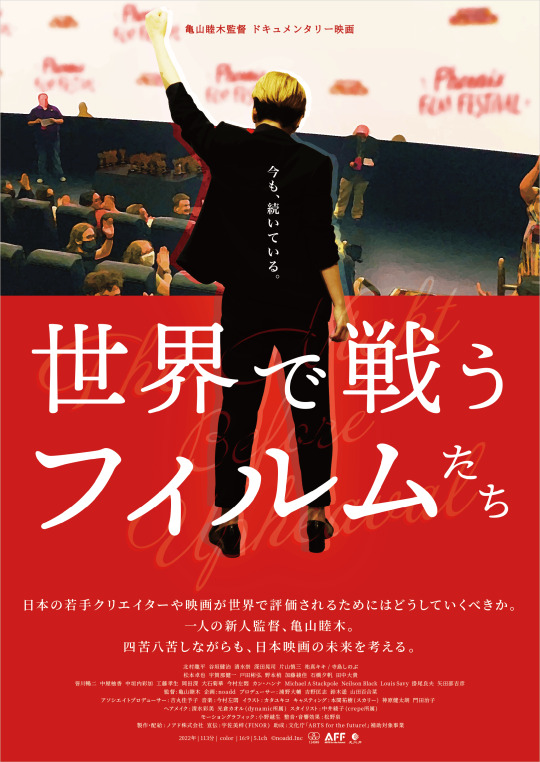
2023.05.20
ドキュメンタリー映画『世界で戦うフィルムたち』
本日より、池袋シネマ・ロサにて劇場公開です。 そのほかの劇場は順次公開してまいりますので、続報をお楽しみに。 ーー Documentary film "The Night Before Upheaval"
The film will open today at the Ikebukuro Cinema Rosa. Other theaters will follow in due course, so please look forward to further updates.
youtube
【あらすじ】
世界に向けて挑戦を続ける若手映画監督・亀山睦木が、日本映画の未来を模索した実録ドキュメンタリー。
亀山監督は自身の監督作「12ヶ月のカイ」を110以上もの海外の映画祭に応募し、現地の声を聞くためアメリカからヨーロッパまで足を運んだ。その道のりを追い、キャストやスタッフの思いを込めた作品を1人でも多くの観客に観てもらうべく奮闘する亀山監督の姿を映し出す。
さらに亀山監督は、日本を代表する俳優・寺島しのぶ、ハリウッド作品も手がける清水崇監督や北村龍平監督ら映画関係者にインタビューを敢行。世界で活躍する日本人の経験や、若手監督・俳優のリアルな苦悩が本人たちの言葉で語られる。 ーー 【STORY】 This is a true-life documentary by Mutsuki Kameyama, a young film director who continues to challenge the world, in search of the future of the Japanese film industry.
Kameyama submitted their film "12 Months of KAI" to over 110 overseas film festivals, and traveled from the U.S. to Europe to hear the voices of local audiences. The film follows Kameyama's journey and their struggle to get as many viewers as possible to see their film, which is filled with the thoughts and feelings of the cast and crew.
They also interviewed leading Japanese actor Shinobu Terajima, as well as directors Takashi Shimizu and Ryuhei Kitamura, who have also worked on Hollywood productions, and others involved in the film industry. In their own words, they speak of the experiences of Japanese filmmakers working around the world and the real-life struggles of young directors and actors.
【出演】
北村龍平 谷垣健治 清水崇 深田晃司 片山慎三 祐真キキ / 寺島しのぶ 松本卓也 宇賀那健一 戸田彬弘 野本梢 加藤綾佳 石橋夕帆 田中大貴 皆川暢二 中屋柚香 中垣内彩加 工藤孝生 岡田深 大石菊華 今村左悶 カン・ハンナ Michael A Stackpole Neilson Black Louis Savy 掛尾良夫 矢田部吉彦
【スタッフ】
監督:亀山睦木 企画 : noadd プロデューサー : 浦野大輔 吉野匡志 鈴木遥 山田百合菜 アソシエイトプロデューサー : 吉丸佳予子 音楽 : 今村左悶 イラスト : カタユキコ キャスティング : 本間祐樹 ( スカリー ) 神原健太朗 門田治子 ヘアメイク : 清水彩美 光倉カオル (dynamic 所属) スタイリスト : 中井綾子 (crepe 所属) モーショングラフィック: 小野越生 整音・音響効果 : 松野泉 製作・配給 :ノアド株式会社 助成 : 文化庁「ARTS for the future! 」補助対象事業 ーー 【Interviewee】
Ryuhei Kitamura, Kenji Tanigaki, Takashi Shimizu, Koji Fukada Shinzo Katayama, Kiki Sukezane / Shinobu Terajima Takuya Matsumoto, Kenichi Ugana, Akihiro Toda, Kozue Nomoto Ayaka Kato, Yuho Ishibashi, Daiki Tanaka, Youji Minagawa Yuzuka Nakaya, Ayaka Nakagochi, Kosei Kudo, Jin Okada Kikka Oiwa, Samon Imamura, Kang Hanna Michael A Stackpole, Neilson Black, Louis Savy, Yoshio Kakeo, Yoshi Yatabe
【Staff】
Director:Mutsuki Kameyama Producer : Daisuke Urano, Tadashi Yoshino, Haruka Suzuki, Yurina Yamada Associate Producer : Kayoko Yoshimaru Music : Samon Imamura Illustlation : Yukiko Kata Casting : Yuki Honma (SKALY), Kentaro Kanbara, Haruko Monda Hair and Make : Ayami Shimizu, Kaoru Mitsukura(dynamic) Stylist : Ayako Nakai(crepe) Motion Graphic : Essei Ono Sound Design & Effects : Izumi Matsuno Produce & Distribution : noadd Inc. Supported by Agency for Cultural Affairs「ARTS for the future! 」
0 notes
Text
An Autumn Afternoon (Yasujiro Ozu, 1963)
Cast: Chishu Ryu, Shima Iwashita, Keiji Sada, Mariko Okada, Teruo Yushida, Noriko Maki, Shin'ichiro Mikami, Nobuo Nakamura, Kuniko Miyake, Eijiro Tono, Haruko Sugimura, Kyoko Kishida, Daisuke Kato. Screenplay: Kogo Noda, Yasujiro Ozu. Cinematography: Yuharu Atsuta. Production design: Minoru Kanekatsu










An Autumn Afternoon (1962) | dir. Yasujirō Ozu
41 notes
·
View notes
Photo

The cast of Kantaro Terauchi Family (寺内貫太郎一家), 1974. From L to R:
Chiho Yuki (悠木千帆) Hideki Saijo (西城秀樹) Miyoko Asada (浅田美代子) Asei Kobayashi (小林亜星) Haruko Kato (加藤治子) Meiko Kaji (梶芽衣子)
#Meiko Kaji#梶芽衣子#Kantaro Terauchi Family#Asei Kobayashi#Chiho Yuki#Hideki Saijo#Miyoko Asada#Haruko Kato#寺内貫太郎一家#悠木千帆#西城秀樹#浅田美代子#小林亜星#加藤治子#press photo#kantaro family
100 notes
·
View notes
Photo
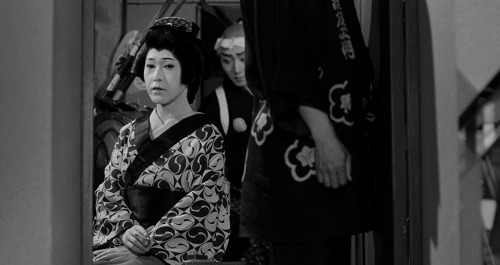
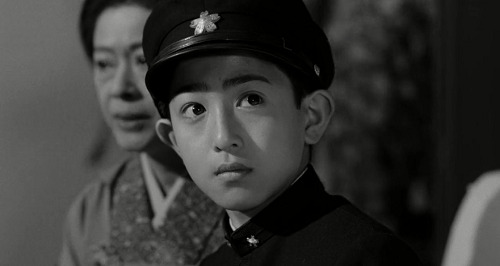

Mishima: A Life in Four Chapters (1985) · Paul Schrader
15 notes
·
View notes
Text
legendreign:
When Taiga was growing up in America, sometimes Alex would take him and Tatsuya out to restaurants on their birthdays and the restaurant staff always sang them the birthday song. The birthday song was a tradition was a reason!
Taiga couldn’t resist teasing the girl a bit as he smirked.

“Well, this is part of your job, isn’t it Tsukushima?”
Tsukushima was so awkward, it was kind of cute. He did feel a bit bad but he didn’t regret making her sing one bit. It was really nice to see the other customers give some loud cheers.
When she told him about a wish, he had a thoughtful look and thought to himself “What do I want to wish for this year?” Soon after, he wished to defeat the Generation of Miracles and become one of the best basketball players in Japan as he clasped his hands with his eyes closed before blowing out the candle.
The reason Masaru came into work early was because Saya’s 16th birthday was coming up in two days and he wanted to spend as much time with her until then.

“Oh Kagami, today’s your birthday? Guess I was late to join in the birthday song, I hope you have a good day today.”
“Uh, thanks Kato.”
“Haruko, prepare to get ready to leave.”
Masaru left then soon returned in his waiter outfit.
Haruko beamed at Masaru’s direction -- sounded like she was able to leave earlier that day, after all.
“Well, this is good news,” she grinned at Kagami’s directions. “I’ll go get changed, you enjoy your cake in the meantime.”
She went back to the staff room, and quickly changed into her daily clothes, putting the uniform in the small cabined she had been assigned. Before she left, however, she made a point to greet her mother and Otonashi-sama, and went to say goodbye to Masaru as well.

“Thank you for allowing me to end my shift earlier,” she said with a quick bow of her head. “My friend is spending her birthday alone and I thought it would be nice to keep him company.”
And with that, she nodded at Kagami, who was still enjoying his cake at the table.
“Do you know any fun places I could take him to?” She asked Masaru. “I want him to have a good time!”
20 notes
·
View notes
Text
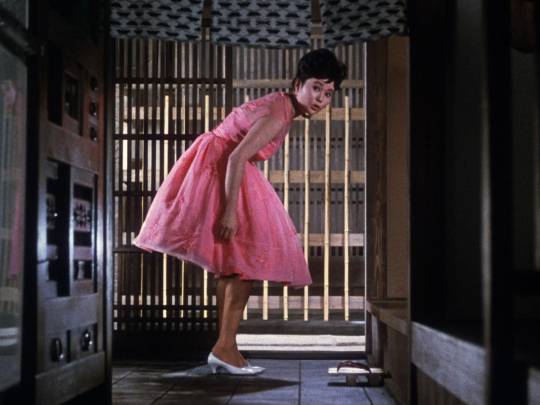
Reiko Dan in The End of Summer (Yasujiro Ozu, 1961)
Cast: Ganjiro Nakamura, Setsuko Hara, Yoko Tsukasa, Michiyo Aratama, Keiju Kobayashi, Masahiko Shimazu, Hisayu Morishige, Chieko Naniwa, Reiko Dan, Haruko Sugimura, Daisuke Kato. Screenplay: Kogo Noda, Yasujiro Ozu. Cinematography: Asakazu Nakai. Production design: Tomoo Shimogawara. Film editing: Koichi Iwashita. Music: Toshiro Mayuzumi.
I would call Ozu the most "Chekhovian" of filmmakers because his movies really do remind me of Chekhov's plays. But the adjective has been so overused to the point that all it seems to mean is "a melancholy character study with a little humor, no action, and not much plot." That is, of course, true of The End of Summer, but it doesn't come close to capturing the effect of the film (and of the best performances of Chekhov's plays), the sense of having spent privileged moments with people as they go through the universal experiences of living: love, disappointment, death, reconciliation, coping with the past, and so on. It's about the Kohayagawa family, who run a small sake brewery that's in financial difficulties, partly because the patriarch, Manbei (Ganjiro Nakamura), has lost interest in the company. In his old age, he has rediscovered a former mistress, Sasaki (Chieko Naniwa), whose 21-year-old daughter, Yuriko (Reiko Dan), may be his own child. She's a flighty young thing who has a couple of American boyfriends and really hopes only to get a mink stole out of Manbei. Meanwhile, his own family struggles to figure out what to do with the business and how to keep track of Manbei, sometimes sending out employees to follow him on his excursions to see Sasaki. Manbei has two daughters, Fumiko (Michiyo Aratama) and Noriko (Yoko Tsukasa), as well as a daughter-in-law, Akiko (Setsuko Hara), his son's widow. Fumiko is married, and Manbei wants to get Noriko and Akiko married off before he dies, so he asks his brother-in-law, Kitagawa (Daisuke Kato), to find husbands for them. Neither woman is particularly interested in Kitagawa's picks, but they go through the motions to please Manbei. Like I said, not much plot, but Ozu and co-screenwriter Kogo Noda make the most of the characters, particularly Manbei himself, whom Nakamura turns into an endearing scamp. As often in Ozu's films, there are peripheral characters who serve as a kind of chorus: In this case, it's a couple of farmers (Chishu Ryu, who appeared in almost all of Ozu's films, and Yuko Mochizuki) who watch the funeral procession at the film's end and provide the appropriate comment about the "cycle of life."
0 notes
Text
Ensemble Stars: gli idol di Happy Elements sbarcheranno al cinema con un film
La pellicola, targata ancora una volta David Production, sarà ambientata a New York.

La casa di sviluppo Happy Elements ha annunciato che l’anime di “Ensemble Stars!” tornerà nel 2022 e questa volta approderà sul grande schermo.
Per il prossimo 4 marzo, infatti, è programmato il debutto in Giappone di un film d’animazione dal titolo “Ensemble Stars!! Road to Show!!”, che vedrà i giovani idol, protagonisti del franchise, partecipare ad un Idol Film Festival in quel di New York.
La pellicola torna ad essere prodotta da DAVID PRODUCTION (Cells at Work! Lavori in Corpo, Fire Force), ma vede al lavoro uno staff leggermente diverso da quello della precedente serie tv andata in onda nel 2019.
Il progetto è infatti supervisionato da Asami Nakatani e diretto da Masakazu Hishida (Fairy Ranmaru, King of Prism), mentre la sceneggiatura è firmata da Seitaro Kino di Happy Elements. In compenso, il character design è curato nuovamente da Haruko Iizuka (Josée la Tigre e i Pesci, Children of the Whales) e anche le musiche sono composte ancora una volta da Tatsuya Kato (Love Live! Sunshine!!, Free!).
Nato con l’omonimo videogioco mobile, il franchise si compone anche di manga, romanzi, album e musical.
* NON VUOI PERDERTI NEANCHE UN POST? ENTRA NEL CANALE TELEGRAM! *
youtube
Autore: SilenziO)))
[FONTE]
#ensemble stars!#anime#film#videogame#happy elements#ensemble stars#road to show#idol#newsintheshell#cartoni animati#news in the shell#animazione#musica#giappone#new york
3 notes
·
View notes
Photo


New MaM and Eden unit character visuals for the TV anime “Ensemble Stars!” have been released. Its broadcast will begin July 7th (David Production)
-Synopsis-
“Yumenosaki Private Academy, a school located on a hill facing the ocean. Specializing in boys’ idol training, the school has a long history of producing generations of idols for the entertainment world out of the young men overbrimming with talents, like the shining stars in the sky. Due to “special circumstances,” you are a transfer student at the school, as well as the only female student there. In fact, you are chosen to be the very first student of the “producer course,” and your task is to produce these idols… We hope you will enjoy your journey with the idols you meet at the academy, as well as the vigorous ensemble that together you will make.”
-Staff-
Director: Junpaku Yagurashita, Yasufumi Soejima
Character Design: Haruko Iizuka
Series Composition: Akira
Art Director: Saho Yamane
Director of Photography: Tomoya Kamijou
Editing: Mai Hasegawa
Color Key Artist: Eri Suzuki
3D Director: Daisuke Kusaka
Sound Effects: Takatoshi Hamano
Music Producer: Satoru Kuwabara
Music: Tatsuya Kato
Studio: David Production
via: ensemblestars-anime.com
55 notes
·
View notes
Text
NHK Special "Can Mathematicians Connect the Universe?"
I watched the program. Many people who saw it might take it that Mochizuki is a new-age genius who is pioneering "new mathematics" and that many mathematicians who object are old guard who cannot understand "new mathematics". My impression is that this is somewhat misleading.
I can understand why people are waiting for a hero. In these gloomy times, it is understandable that the average Japanese would like to see a genius like Shohei Ohtani or Sota Fujii in the world of mathematics (and hopefully it will be a Japanese). But such sentiments have nothing to do with whether a certain person's theory is correct or not.
As I have written many times, there are countless examples of research misconduct encouraged by the atmosphere of people waiting for their heroes. Hendrik Schön, Hwang Woo Suk, Shinichi Fujimura, Haruko Obokata, and many others. Certainly, IUT is not research misconduct, but I cannot help but feel the same "unhealthiness" as research misconduct in the way Mochizuki's paper was forced to be published without substantive revisions despite the objections of the world, and in every word and action of Mochizuki and his sympathizers.
Specifically speaking about this program, I found the following points to be problematic.
No mention of the fact that Mochizuki's paper was published in an "inside" journal PRIMS, which is published by Mochizuki's organization and for which he serves as the editor-in-chief.
The wrong explanation is given: "If it is peer-reviewed in a professional journal, it can be regarded as a recognition of (a certain degree of) correctness by the academic community.
The program emphasizes only the unnecessarily grandiose assertion that "the clash of opinions on IUT is a debate over the state of mathematics itself," and fails to mention the specific point that there is a gap in the Mochizuki paper, Corollary 3.12.
The explanation is given as if Scholze was the only person who had a seminar with Mochizuki at Kyoto University and there is no mention of Stix.
No mention of Mochizuki's dishonesty in continuing to use the derogatory term "Redundant Copies School (RCS)" in his rebuttal paper instead of mentioning Scholze-Stix's name.
No mention of the fact that zbMATH adopted Scholze's review in which he says that Mochizuki's paper does not prove the ABC conjecture.
Only discusses Fumiharu Kato's comment that "This is my opinion, but it is by no means a gap in a mathematical sense" and "I think it is a difference in epistemology towards the subject", and fails to mention Scholze-Stix's point that "there is a specific mathematical gap in Cor.3.12."
Despite the seminar between Scholze, Stix and Mochizuki (and Yuichiro Hoshi) in 2018, where Scholze and Stix raised doubts about Cor.3.12, the final version of the Mochizuki paper, published in 2020, does not cite or acknowledge Scholze-Stix at all. No mention of it in the program.
In the program, Thomas Tucker (University of Rochester) says "If ABC is proved, it will be ...", but that part is not translated in Japanese. Only the Japanese dubbed voice and subtitles, "This is the greatest advance in the history of number theory," and "There is no greater achievement," are superimposed on the audio, and the video is edited as if Tucker is admitting the correctness of Mochizuki's paper.
It seems that NHK BS Premium will broadcast the "complete version" expanded to 90 minutes on April 15, but NHK BS is not available in my house...
1 note
·
View note